Why Is Carbon Important?
What is carbon?
Take a deep breath in. And breathe out. You just exhaled carbon dioxide!
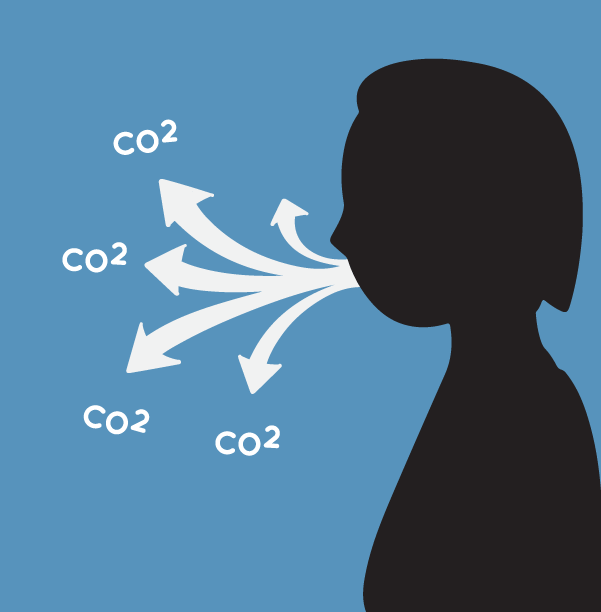
Humans exhale carbon dioxide. Credit: NASA/JPL-Caltech.
All living things on Earth contain carbon. Even you contain carbon. Lots of it! Like every other living thing on this planet, we are a part of Earth's carbon cycle. Plants take in CO2. They keep the carbon and give away the oxygen. Animals breathe in the oxygen and breathe out carbon dioxide. Carbon, including carbon dioxide, has cycled into and out of the air for a long time. This cycling of carbon has stayed balanced over long periods of time.
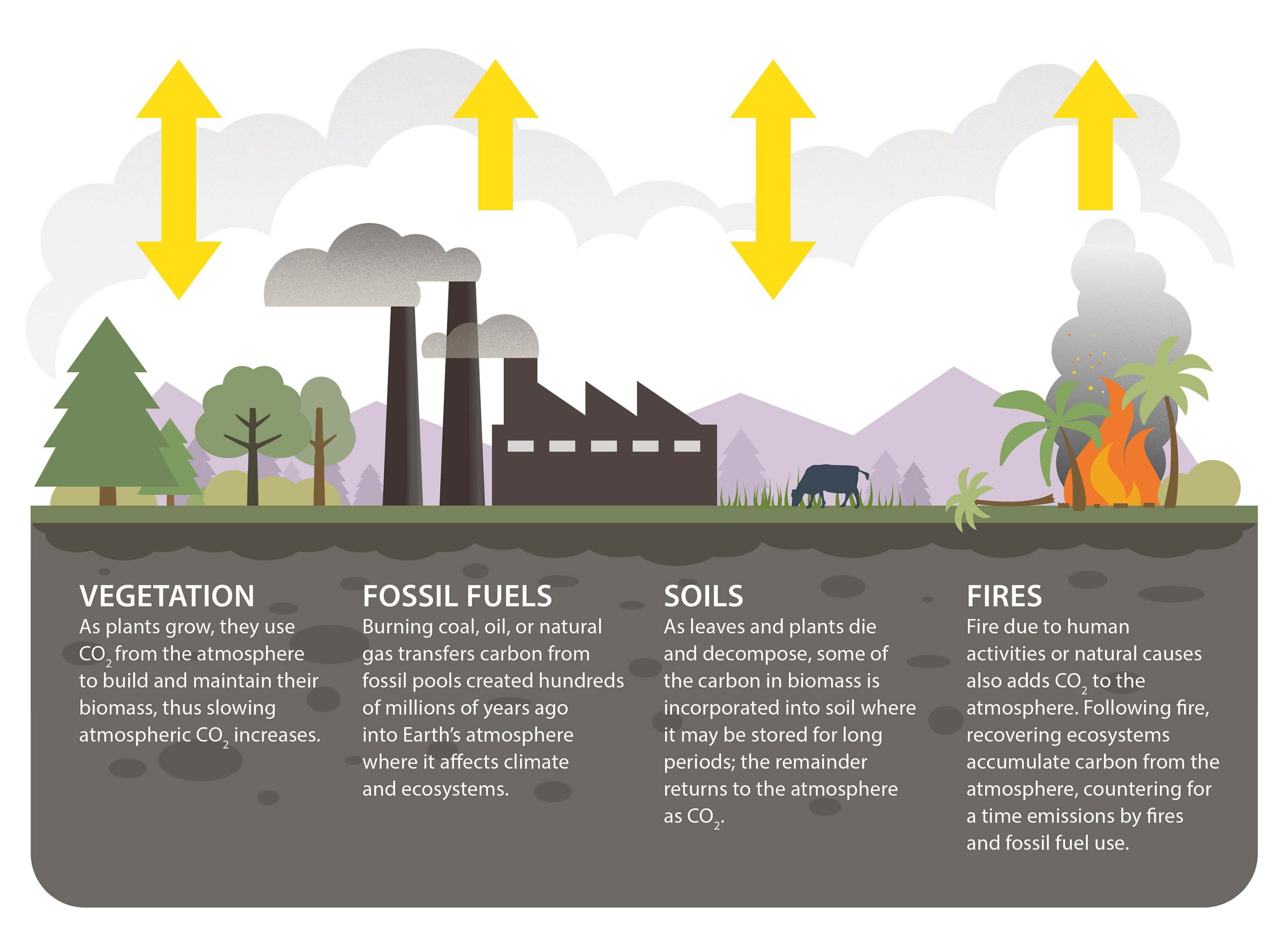
The carbon cycle. Credit: NASA/JPL-Caltech.
What is carbon dioxide?
Carbon dioxide is an important gas for life on the planet. (Remember our deep breath in and out?) It is crucial to maintaining the protective blanket that is Earth's atmosphere. Carbon dioxide is often called "C-O-2" (pronounced see-oh-two) and written as "CO2" because "C" stands for carbon and "O" stands for oxygen. Carbon dioxide is one of the primary greenhouse gases on Earth.
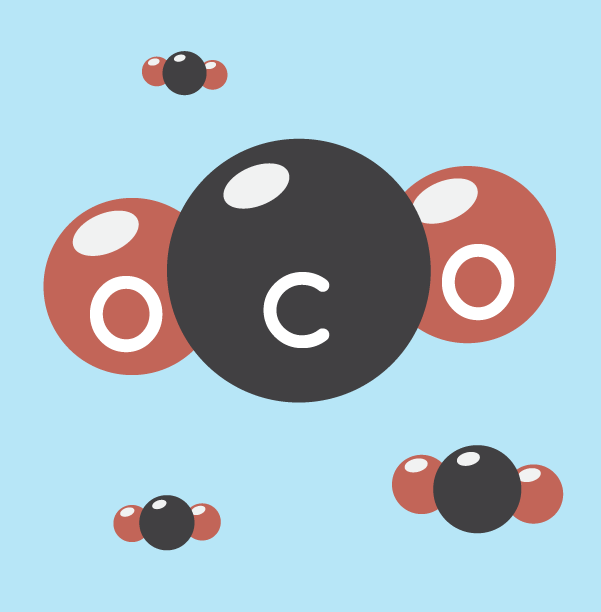
Carbon dioxide is called CO2 because it has two oxygen atoms attached to one carbon atom. This illustration of a carbon dioxide molecule shows a larger carbon atom (labeled with a C) between two oxygen atoms (labeled with an O). Credit: NASA/JPL-Caltech.
Greenhouse gases trap heat from the Sun. Without greenhouse gases, that heat would escape Earth's atmosphere and go back into space. Human activities, such as burning fossil fuels and cutting down forests, are changing the balance between how much carbon is in the air and how much carbon is stored in plants and the ocean. These activities cause the amount of CO2 in the air to rise. Big increases in CO2 in our atmosphere can negatively affect Earth's climate.

A greenhouse traps the Sun's energy inside and keeps the plants warm. Credit: NASA/JPL-Caltech.
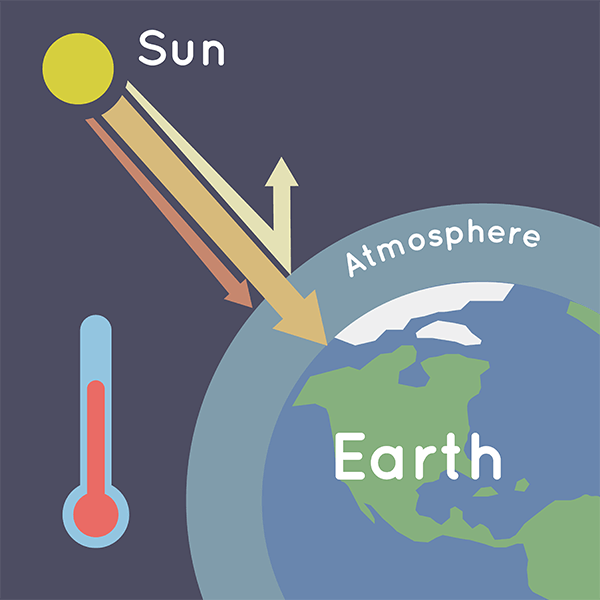
Earth's atmosphere traps some of the Sun's heat, preventing it from escaping back into space at night. Credit: NASA/JPL-Caltech.
So is carbon dioxide bad?
Here's the big, important thing about CO2: It's a greenhouse gas. That means CO2 in the atmosphere traps heat close to Earth. It helps our planet hold onto some of the heat it gets from the Sun so the energy doesn't all escape back into space.

This animated graphic shows how the greenhouse effect works in Earth's atmosphere. Credit: NASA/JPL-Caltech.
If it weren't for this greenhouse effect, Earth's ocean would be frozen solid. If not for the greenhouse effect, Earth would be an ice ball! Earth would not be the beautiful blue and green planet of life that it is.
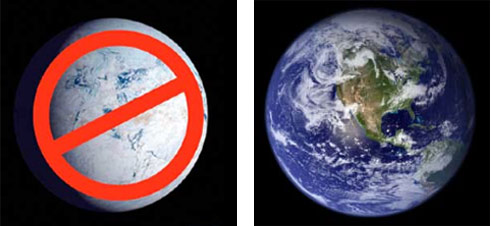
If it weren't for the greenhouse effect, Earth would look like the picture on the left: an ice ball! But our planet is full of life and liquid water because of the greenhouse effect. Credit: NASA/JPL-Caltech.
So, CO2 and other greenhouse gases are good — but only up to a point. CO2 is so good at holding in heat from the Sun that even a small increase in CO2 in the atmosphere can make Earth even warmer.
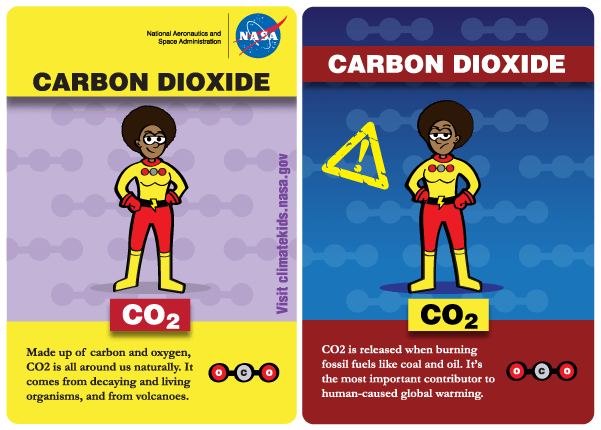
The two sides to carbon dioxide. Learn more about the different greenhouse gases here! Credit: NASA/JPL-Caltech.
Throughout Earth's history, whenever the amount of CO2 in the atmosphere has gone up, the temperature of Earth has also gone up. And when the temperature rises, CO2 levels in the atmosphere increase even more, mostly because of the role the ocean plays in the carbon cycle. As ocean temperatures increase, oceans release stored carbon dioxide into the atmosphere – like a glass of soda losing its bubbles on a warm day.

This graph shows how atmospheric CO2 has increased since the Industrial Revolution. Credit: Luthi, D., et al.. 2008; Etheridge, D.M., et al. 2010; Vostok ice core data/J.R. Petit et al.; NOAA Mauna Loa CO2 record.
How is NASA learning about carbon dioxide?
How is our planet handling this change to one of the key elements of life on Earth? To answer that, we need to keep a close eye on carbon. We need to know how and where it is entering and leaving the atmosphere and how it is interacting with weather and climate.
NASA's research satellites are studying how carbon moves around the planet.
NASA's Orbiting Carbon Observatory 2, or OCO-2, launched in 2014 to measure CO2 to better observe Earth's carbon cycle. OCO-2 investigates important questions about carbon dioxide on Earth all the way from space! NASA's OCO-2 also helps explore how measurements from space can predict future CO2 increases and its impact on Earth's climate.

An illustration of OCO-2 taking carbon dioxide measurements on Earth all the way from space. Credit: NASA/JPL-Caltech.
Using technology like OCO-2, we can measure and map carbon dioxide from space to help us understand the interaction between carbon and climate.
Check out the Climate Time Machine to see how CO2 and temperature have changed together throughout history.












